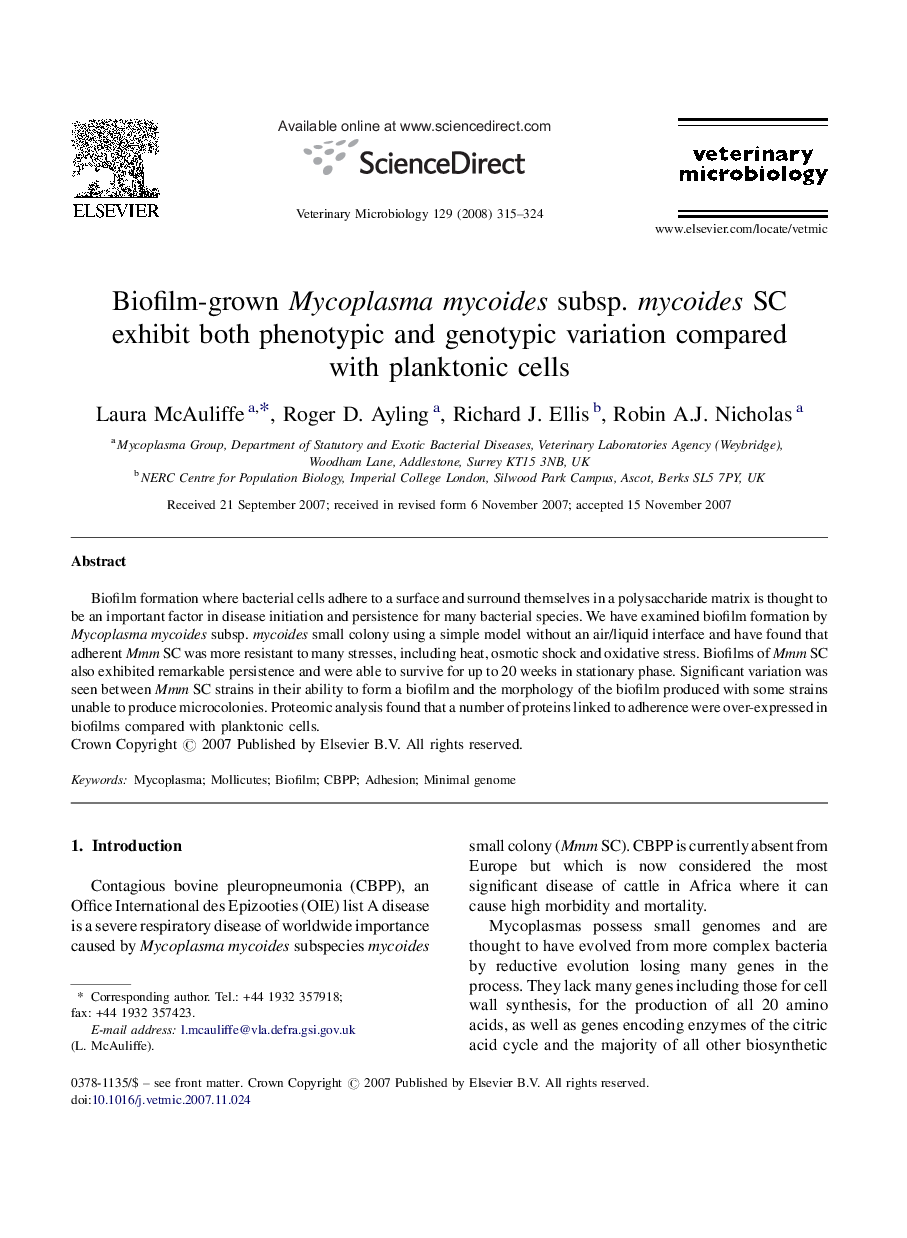| Article ID | Journal | Published Year | Pages | File Type |
|---|---|---|---|---|
| 2468782 | Veterinary Microbiology | 2008 | 10 Pages |
Biofilm formation where bacterial cells adhere to a surface and surround themselves in a polysaccharide matrix is thought to be an important factor in disease initiation and persistence for many bacterial species. We have examined biofilm formation by Mycoplasma mycoides subsp. mycoides small colony using a simple model without an air/liquid interface and have found that adherent Mmm SC was more resistant to many stresses, including heat, osmotic shock and oxidative stress. Biofilms of Mmm SC also exhibited remarkable persistence and were able to survive for up to 20 weeks in stationary phase. Significant variation was seen between Mmm SC strains in their ability to form a biofilm and the morphology of the biofilm produced with some strains unable to produce microcolonies. Proteomic analysis found that a number of proteins linked to adherence were over-expressed in biofilms compared with planktonic cells.
